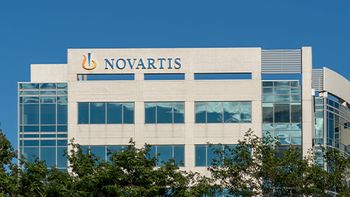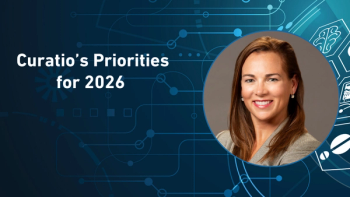
- Pharmaceutical Commerce - January/February 2017
HDA Specialty Distribution 2016 report
More hospital, but fewer practitioner deliveries
As the fortunes of the Big Three drug wholesalers get whipsawed by changing dynamics in conventional drug distribution, their specialty subsidiaries, along with those of other participants in specialty distribution, are the glowing bright spot in the field. As more specialty products come onto the market, their (typically) higher service requirements, more complicated trip to point of dispensing, and, above all, their sometimes eye-popping prices, are creating a changing distribution channel.
Understanding the dynamics of this channel is the purpose of the HDA Specialty Pharmaceutical Distribution report, 2016 edition, published by the HDA Research Foundation. And like the just-published HDA Factbook on general drug-distribution trends, the report is being made available at no charge. (It can be downloaded at
Through 2015, specialty pharmaceuticals represented 35%, or $151 billion of the $425 billion total market (ex-manufacturer pricing), based on QuintilesIMS data cited by the report. That 35% is up from 2011’s 25%, and this trend is expected to continue for the next few years, with specialties representing 50% of the market by around 2020. (Accepting these figures depends on agreeing on a definition of what a specialty is; the HDA Research Foundation uses a fairly restrictive one that doesn’t include insulin products.)
Hospitals up; practitioners down
Survey results show that specialty distributors are sending more of their products to hospitals and hospital-owned clinics (36% of customers, versus 30% in 2014), and less to independent physician-owned clinics (49%, versus 58% in the prior year). The trend toward hospitals acquiring ownership of more independent clinics, together with their increasing activity in managing specialty-pharmacy operations internally, is a recognized one, with implications for where patients are getting treatment, and a decreasing focus on the buy-and-bill model of drug purchasing that independent practitioners tend to favor. And, while specialty pharmacies—which have grown dramatically in number and scale in recent years—showed some growth, it was only from 4% to 6% of the specialty distributor customers. That seems to give evidence of direct-to-pharmacy shipments by manufacturers, sidestepping the specialty distributors.
So-called “core” specialty services, according to HDA, are shown in Fig. 1, broken down in categories of supply chain; financial administration; data management; and regulatory compliance support. The report also lists “other” specialty services: patient support; reimbursement support; marketing; and hub services. Other data in the report, however, indicate that some of these “other” services are practiced by essentially 100% of specialty distributors: these include patient assistance programs and reimbursement services and consulting. Many of the leading specialty distributors have been expanding their range of ancillary services, in a competition with each other and
Logistics
Where specialty distributors excel is in minimizing the cost of delivery of specialty products, regardless of the type of customer. A 2015 study by HDA showed that the industry saves over $8 billion in distribution costs, relative to manufacturers handling their own distribution, primarily through the ability to consolidate the storage, handling and logistics of specialty products. This 2106 report shows that specialty products delivered through specialty distributors have nearly 20,000 ship-to points (the majority of which are physician offices); the average specialty distributor has over 17,600 ship-to points.
Cold chain management is a vital function of this logistics process; however, there seem to be some surprising gaps in service: While 100% of specialty distributors are capable of providing insulated packaging and refrigerated transportation for products, only 20% routinely provide temperature monitoring. Surprisingly, only 5% of manufacturers require temperature monitoring to be used (according to the distributor respondents), and only 2% of shipments include this monitoring. Nevertheless, “80% of surveyed distributors believe that overall cold chain compliance and temperature monitoring is increasing in importance,” the report says. (It’s worth noting that not all specialty products require cold chain distribution; on the other hand, essentially all biologics do require it, and the existing Good Distribution Practice [GDP] standards require it for both temperature-controlled and ambient product shipments.)
All surveyed respondents use UPS Air or Ground to handle shipments; a lesser percentage (80%) use FedEx Air and Ground, FedEx Custom Critical and UPS Express Critical. 60% of specialty distributors use other carriers, or local couriers.
Open, limited, exclusive
Arguably the most dynamic aspect of specialty distribution is the distribution model chosen by manufacturers: open (any provider and essentially any pharmacy); limited (select distributors, select pharmacies) or exclusive (one distributor serving a limited number of pharmacies). In general, there is a tradeoff between the control a manufacturer can exert on the extent and quality of distribution services, and the openness of the distribution model; at the same time, while limited or exclusive distribution models provide better control, they limit accessibility of drugs to patients.
All these factors come to bear on the oncology therapy area, representing 26% of the specialty market. (Oncologists also dominate among the practitioners administering specialty products.) Historically, oncologists supported their practices with the financial incentives inherent in a buy-and-bill model, which enabled them to enjoy some degree of price markup (the difference between Average Sale Price and Wholesale Acquisition Cost), while providing convenience to patients who could receive therapy more or less on the spot. The report notes that “in recent years some payers have sought to circumvent the traditional buy and bill model by requiring that a specialty pharmacy act as an intermediary,” whereby the physician files a prescription with the specialty pharmacy, and is reimbursed essentially only for an administrative fee, which HDA calls an “external delivery model.” It goes on to say that “both the buy and bill and external delivery model have a place within the current and future healthcare delivery system.”
Sponsors of the HDA report are CuraScript Specialty Distribution; Genentech; BMS, H. D. Smith, Pharmacy First, Sensitech and Takeda Pharmaceuticals USA. HDA Foundation uses a blind survey process with a third party, Industry Insights, to compile the participant responses while ensuring confidentiality. A select set of specialty distributors—those with annual sales in excess of $1 billion, and capable of servicing all 50 states—were the basis for the survey.
Save
Save
Save
Articles in this issue
almost 9 years ago
Hey, what’s this supply chain stuff?almost 9 years ago
Healthcare confronts opioid addictionalmost 9 years ago
FDA issues guidances on biosimilarity naming, interchangeabilityalmost 9 years ago
US Drug Pricing Debate: Finding some dearly needed real solutionsalmost 9 years ago
A conversation with Mark Sell, MD Logisticsalmost 9 years ago
Getting to prescribers via the diagnostics routealmost 9 years ago
Pharmaceutical Cargo Security Coalition (PCSC) sets expanded agendaalmost 9 years ago
Commercial IT moves to the cloudalmost 9 years ago
Consultant pharmacists and long-term care 101Newsletter
Stay ahead in the life sciences industry with Pharmaceutical Commerce, the latest news, trends, and strategies in drug distribution, commercialization, and market access.





